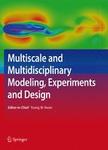版权所有:内蒙古大学图书馆 技术提供:维普资讯• 智图
内蒙古自治区呼和浩特市赛罕区大学西街235号 邮编: 010021

作者机构:Caofeidian Coll Technol Coll Engn Tangshan 063000 Hebei Peoples R China
出 版 物:《MULTISCALE AND MULTIDISCIPLINARY MODELING EXPERIMENTS AND DESIGN》 (Multiscale Multidiscip. Model., Exp. Des.)
年 卷 期:2024年第7卷第2期
页 面:993-1005页
核心收录:
主 题:Building stones Capillary water absorption Estimation Support vector regression Coot optimization algorithm Salp swarm optimization
摘 要:The examination of a rock s capillary water absorption (CWA) entails extensive and time-intensive procedures and experiments. However, the use of machine learning prediction technologies has the potential to reduce both the cost and time associated with this process. This research proposes the use of support vector regression (SVR) models to effectively accomplish the forecasting objectives of the design. The study further emphasizes the identification of optimal SVR parameters by integrating the Coot Optimization Algorithm (COOA) and Salp Swarm Optimization (SSA) techniques. The novelty of this study lies in the combination of SVR with optimization algorithms, the application of machine learning for CWA prediction in rocks, the improved performance of the hybridized approach, and the comparative analysis demonstrating the superiority of the proposed COOA-SVR system over existing methods. The empirical results indicate that both the COOA-SVR and SSA-SVR techniques perform well in the process of CWA forecasting. Specifically, the R-2 values obtained for the training and testing phases are 0.981 and 0.9714, respectively. By evaluating the RMSE index, COOA-SVR could gain roughly half its value with respect to SSA-SVR model, by reducing from 18.4557 to 9.253 g/m(2)/s(0.5) in the train part.